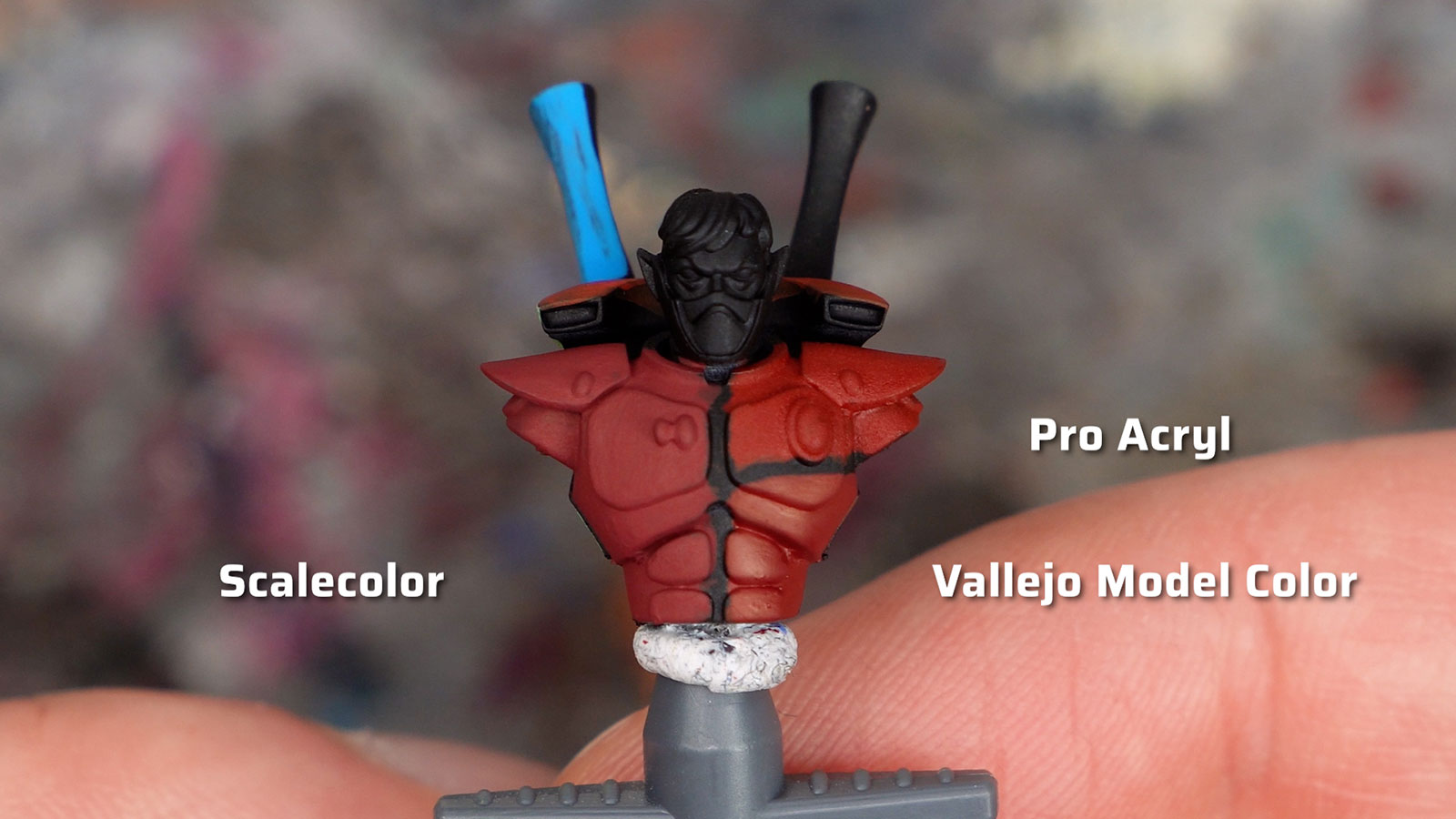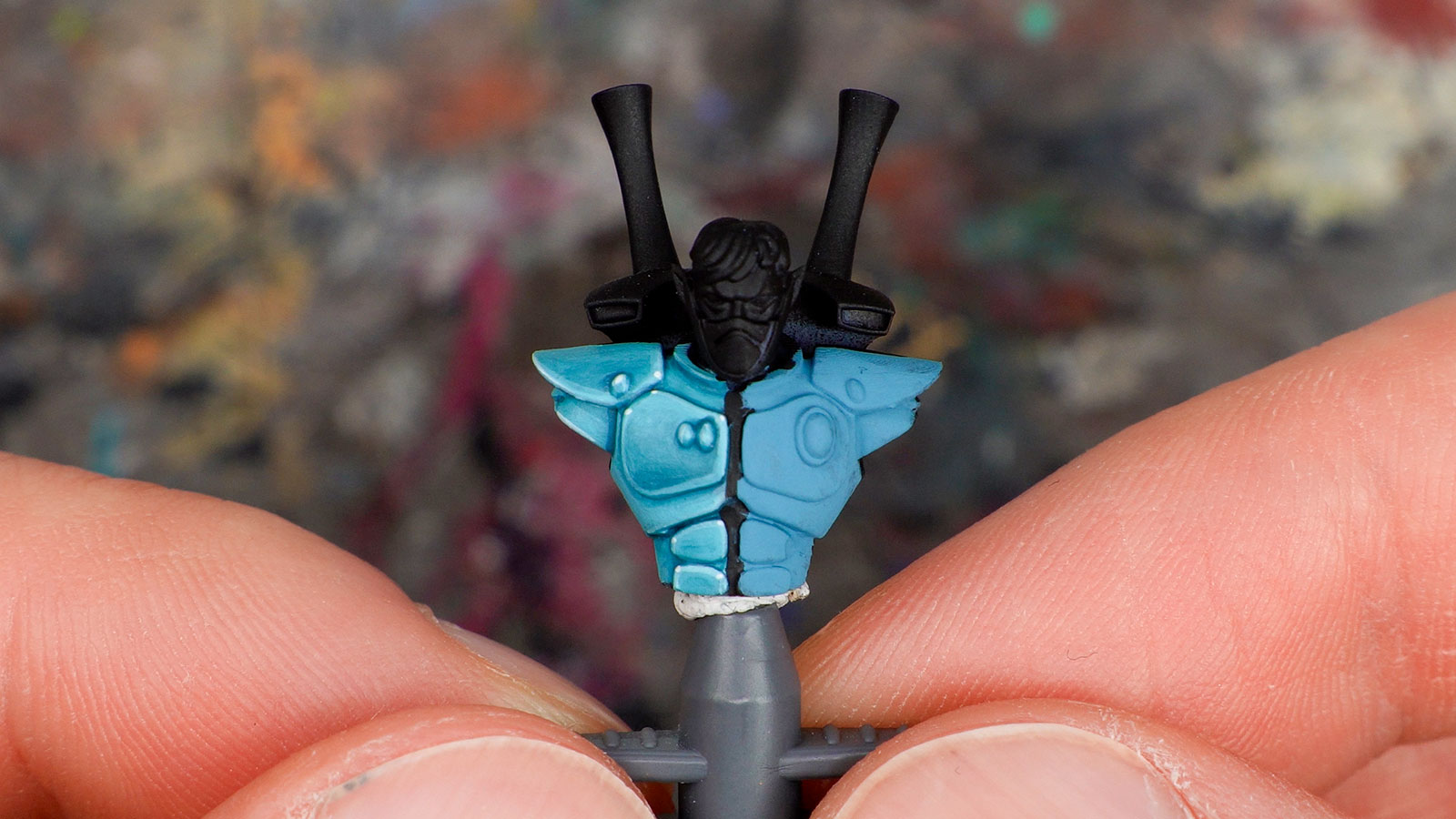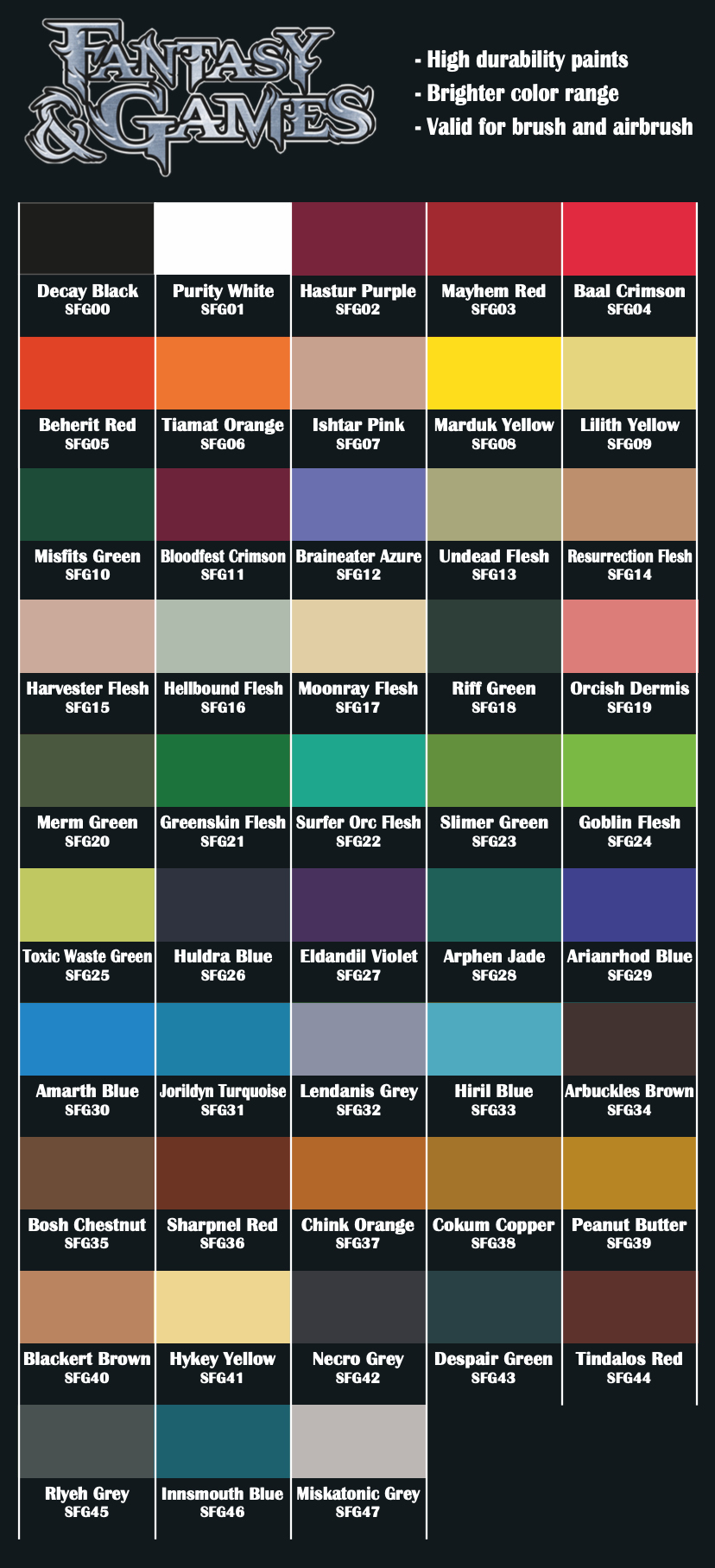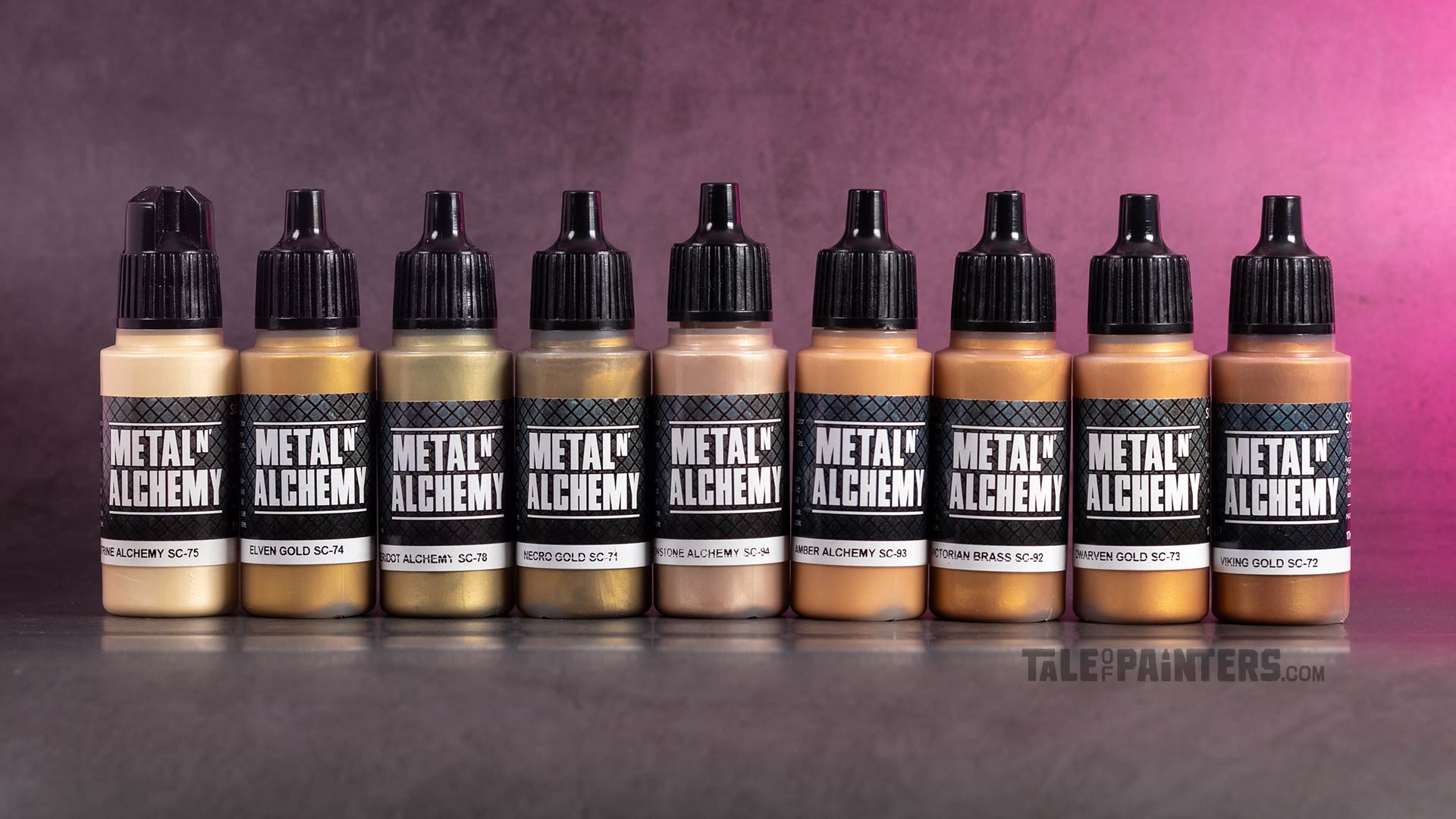Why does no one talk about Scale 75 anymore? In the 2010s, Scalecolor enjoyed great popularity, especially among pro-level painters. However, all I hear from Scale lately is one Kickstarter after another to stay afloat. I wonder if Scale 75 can keep up with all the newer paint ranges and the advancements they brought in covering power and formulation? To answer this question, I’m testing the entire Scalecolor, Fantasy & Games, and Metal’n’Alchemy ranges from the perspective of today in this video.
Many of you have asked when I’ll finally cover Scale 75 – well, the time has come! For this video, I went out and bought all three of Scale’s core ranges: Scalecolor, Fantasy & Games, and Metal’n’Alchemy. Over 130 colours in total, and I have thoroughly tested them all. These paints have been around for over a decade, but can they keep up with modern paint lines like Pro Acryl, Warpaints Fanatic, and the updated Vallejo Game and Model Colors? Let’s find out in this video:
As I hinted in the intro, the Spanish paint manufacturer Scale 75 has been launching one Kickstarter after another, including their “Drop & Paint” airbrush range and the brand-new Scalecolor Games. Relying so heavily on crowdfunding cashflow can turn into a vicious cycle, as we’ve seen with other tabletop and board game companies. Not long ago, Scale 75’s CEO even posted an open letter on Instagram addressing the challenges the company is facing. Let’s hope they pull through, it would be a shame to lose them.
Now, onto the review. I’ve got all of the three core ranges’ paints here. We’ll start with Scalecolor, then move on to the Fantasy & Games line, and finally, we’ll take a deep dive into the metallics from the Metal’n’Alchemy range. And you want to stick around for that, because there are some truly unique metallic colours in there!
The Scalecolor range reviewed
The Scalecolor range may be relatively small at just 63 acrylic paints, but it offers something unique that not a lot of other paint ranges can do – more on that in a moment. First, let’s take a look at the bottles. These are standard 17ml dropper bottles, no agitator, but unlike other brands, you’ll need to pierce the nozzle yourself with a sharp object.
The paint has a good consistency – neither too thick nor too thin – and holds up well on a wet palette. The application feels slightly gel-like, and the self-levelling properties aren’t quite as forgiving as more modern ranges like Pro Acryl, Two Thin Coats, or Ionic, which have more flow improver added. This means you’ll need to take extra care to avoid visible brushstrokes, as the working time is average.


The bright colours are highly pigmented with excellent saturation and intensity. However, this comes at the cost of covering power – the brighter colours tend to be quite transparent. This issue isn’t limited to the usual suspects like yellow, orange, and red; even bright greens and blues struggle with opacity.
The darker colours are fine, but to fully enjoy the Scalecolor range you need to like working with semi-transparent layers, and prefer vibrancy over coverage. They’re great for feathered blendings and, thanks to their pigment purity, also ideal for glazing as they thin down really nicely without breaking. This also makes them decent for airbrushing, just bear in mind that airbrush thinner can change the finish.
The moody palette
Even though the paint range is quite small, one of the biggest strengths of this range is the colour palette. There are the vibrant colours I mentioned, but also moody colours you don’t find as much in other ranges, like deep purples, cloudy blues, and dusky greys. “Moody” is indeed the word that best describes the palette.


I’d recommend picking a few colours from the range to get a feel for how they paint before you commit to a full set. I’ve created an accurate, hand-painted swatch for Scalecolor, in which you can see exactly how the colours will look on the model, and there are also icons that tell you the covering power and highlight extra vibrant colours. This way, you can find exactly the colours you need for your next project.


This hand-painted swatch is available in my Patreon shop for a small donation (or by becoming an Autarch tier member). I also have swatches for Pro Acryl, AK 3rd Gen, Vallejo Game & Model Color, Citadel Colour, and more – all cross-compatible with each other so you can compare colours across different brands. Check out my shop for details.
The Scalecolor USP
But there is one more thing about Scalecolor that is special, another unique feature that no other paint range can match – the finish. Scalecolor is ultra matte, the mattest miniature paint you can find. Here’s a comparison with the already matte Pro Acryl and Vallejo Model Color, and Scalecolor is noticeably more flat. However, be aware that this extreme mattness makes the paints quite delicate. They rub off easily, even the oils from your fingers can leave marks, just as with ultra-matte varnishes.


And that’s exactly what makes it difficult for me to give a score for the Scalecolor range. The ultra-matte finish makes Scalecolor unique, but it also has its drawbacks, just like the vibrant pigments that result in poor covering power. 6.5 would be a bit too harsh, considering the palette has so many beautiful colours, so that’s why I’m giving Scalecolor a solid 7. Depending on your preferences and paint style, your mileage may vary.
Now, let’s take a look at the Fantasy & Games range, because it differs fundamentally from the Scalecolor range in one key aspect.
A look at the Fantasy & Games range
First, the blue cap Fantasy & Games palette is even smaller with only 48 colours. At first, the paints feel very similar in consistency and painting properties to their sister range, but there’s one key difference. It’s not the consistency or vibrancy, though, those are on the same level. And just as with Scalecolor, you need to look out for visible brushstrokes. The pigments are also pure and vibrant, which again comes at the expense of covering power.


The big difference, however, is the finish. Where Scalecolor is ultra-matte, the Fantasy & Games paints have a satin finish, similar to Citadel and Warpaints Fanatic. Perhaps even a bit more so, though not quite as satin-glossy as P3. This provides more durability, as the glossier a paint is, the smoother it is on a microscopic level, making it more resistant to external influences. The satin finish also boosts the depth of the colours.
A brighter colour selection
If you compare 48 colours to other competitor paint ranges like AK 3rd Gen and Vallejo Model Color, which each have over 200 colours, it’s obvious that the Fantasy & Games range must have some gaps. There seems to be more of an emphasis on vibrant colours, while bone and sand tones are completely missing. So, you’ll need to start mixing or supplement the range with paints from other brands.


Feel free to check out my Patreon, as in addition to the Scalecolor chart, I have super-accurate hand-painted swatches for all major miniature paint brands, as well as a huge 7-in-1 document with over 1100 neatly arranged colour squares.


Over 1,100 accurate hand-painted colour samples, covering the seven most popular miniature paint ranges (Citadel, Warpaints Fanatic, Vallejo Game & Model Color, AK 3rd Gen, Pro Acryl, and Two Thin Coats). Sorted by colour families, hue, value, and saturation, in an interactive PDF document with a handy navigation and helpful appendix about colour reproduction. Check out my Patreon shop for details.
Otherwise, most of what I said about Scalecolor applies here too, so the Fantasy & Games paints are more for people who like to work with transparent paints, for example, for blending and glazing. The covering power does seem to be a bit weaker across the board, and they also lack the unique selling point of the ultra matte finish. So I’d lean towards a 6.5 rather than a 7 for the Fantasy & Games range, especially when compared to the many newer paint ranges.
By the way, at the time of this video, Scale 75 is shipping its new Scalecolor Games range from Kickstarter. I’m curious to see how this expands or replaces the Fantasy & Games range. From what I’ve heard, they have a more matte finish. If you already have these paints, please share your experiences in the comments, and let me know if you’d like to see a review on my Youtube channel.
Now, let’s move on to the metallics, and I can already tell you that these are my favourite Scalecolor range. Let me tell you why.
Gorgeous metallics: Metal’n’Alchemy
With 24 colours, the Metal’n’Alchemy line offers a really broad selection of metallic hues. While there aren’t as many silvers and steels, there are plenty of gold, bronze, and copper tones to choose from. Especially when it comes to more realistic, brownish golds and bronzes. And there are also some colourful, candy-coloured metallics.


As you can see in the video, he consistency of the Metal’n’Alchemy paints, like the other Scale ranges, is very even and uniform. Unfortunately, I couldn’t find out whether the paints use aluminium or mica flakes. However, the particles are very fine, and provide a smooth finish that’s slightly more matte than, for example, Citadel Colour metallics with their larger, more glittery particles.
The covering power varies; the darker colours cover very well in two thin coats, the mid-tones and golds need three to four, and because of their nature the light and candy-coloured metallics need even more than that. For highlighting and layering, that’s okay, but for basecoating, I would rather reach for the airbrush when using the brighter metallics. Also, keep in mind that the candy metallics are quite pastel and silvery and not quite as intensely tinted as the coloured metallics from the Two Thin Coats range, for example.
So I’d say that overall, the Metal’n’Alchemy paints don’t quite match up to Vallejo Mecha and Metal Color, or stand-out colours like Retributor Armour from Games Workshop, but they’re close. That’s why I give them a solid 7.5, with a tendency to 8 for some staples like Decayed Metal, Necro Gold, Viking Gold, Black Metal, and Thrash Metal, which are so good they deserve a place in any collection.
Value
Price-wise, Scalecolor sits above competitors like Warpaints Fanatic or Vallejo but remains cheaper per ml than Citadel. Outside of Europe they might be a bit harder to find.
You can find the latest hobby products at our 🇬🇧/🇪🇺 partner stores Wayland Games, Element Games, and Firestorm Games, at 🇩🇪 Taschengelddieb and PK-Pro, and at 🇺🇸 Noble Knight Games with a welcome discount of up to 10–15% over RRP. Using our links helps to support Tale of Painters at no additional cost to you, so thank you very much for using them!
I hope you found this review helpful, feel free to leave a reaction or comment below, or post your questions here or discuss on our Discord channel.
7.0 Score
Pros
- Moody colours that you don't find easily in other ranges
- Highly pigmented, thin down without breaking
- Scalecolor is the most matte miniature paint
- High-quality metallics with a deep selection of golds, bronzes, and candy colours
Cons
- Medium to low covering power
- Prone to visible brushstrokes
- Ultra-matte Scalecolor paints are delicate
Final Verdict
Now, we come back to the initial question of how good old Scalecolor fares compared to more modern paint ranges. I'd say… the range does show its age. Newer paint ranges tend to have better covering power and more forgiving self-levelling properties, making them more accessible to a wider range of hobbyists. However, Scalecolor still has its place. The saturated colours, fantastic dilution capabilities, and ultra-matte finish can be quite appealing, especially if you tend to paint with more transparent layers anyway. I like to think of Scale 75 as a “boutique” brand; you go for them when you're looking for something special you can't find elsewhere, and for that you forgive them the odd shortcoming.


I’m really interested in the metallics, but it seems no shop in Germany has a sufficient stock. Especially those you recommended are not in stock. Too bad.